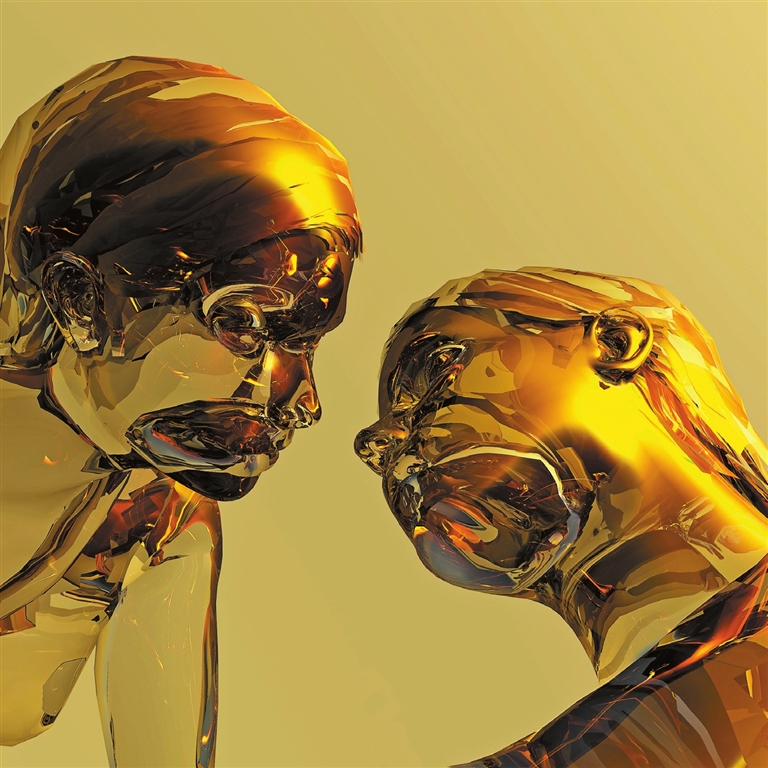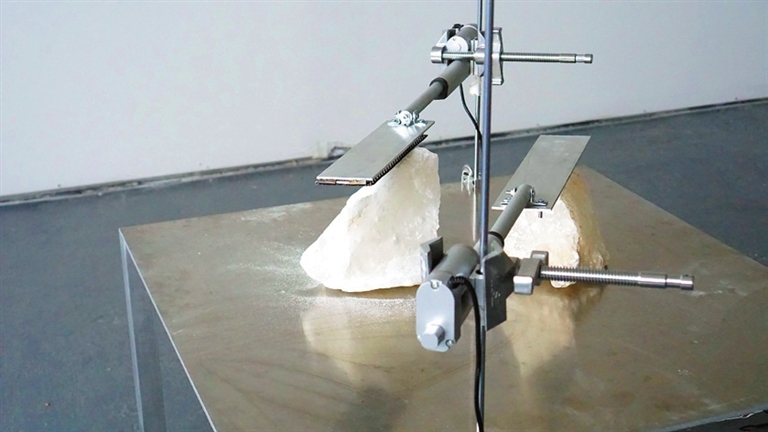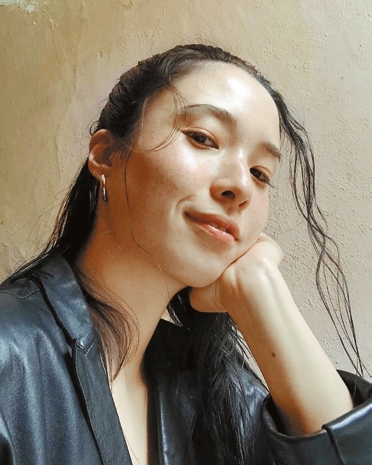


Liu Haixing U.S. professor Steven Z. Levine writes in “Lacan Reframed: Interpreting Key Thinkers for the Arts,” “The dilemma we face is that the virtual world of infantile desire is wrongly constructed from the beginning on the mysterious trail of the desire of the other, the other perhaps being the mother. Therefore we simply never express desire ourselves.” One of U.S.-based Chinese artist Ziyu He’s works, titled “Cyber Dominatrix,” is a computer software that is intended to explore the power dynamic between users and machines in the technological age, an investigation of the relationship between identity and personal data. In everyday life, the user commands the machine (computer and mobile phone), giving it instructions (sending emails, transferring files, taking pictures), and the machine’s task is to execute the instructions. The user is the dominator and the machine is the subordinate. This art work reverses this traditional power dynmaic: When the software is successfully loaded, “it” (the software) gives voice orders to the user to perform 10 tasks, and if the tasks are not accomplished, the “user” (the user’s personal data) will be punished. This work debuted at a launch ceremony in the basement of a factory building. In this installation experiment, the real-life problem is exaggerated and rendered extreme by the virtual scene. The problems that extend from the physical scene are interchanged between “I” and “it.” The commander and the servant are preemptively set up by a larger being, beyond the initially designed role. Perhaps we need to abandon our preconceptions that are set by certain boundaries and look for breakthroughs and liminal spaces between boundaries. The artist gave a special account of her childhood experience. “As a toddler, I took a train from Chengdu, where I was born, to Beijing at the age of two months, crying and screaming all the way. At the age of 2, I was sent to my grandmother’s house in Chongqing because my parents were studying in the U.K. I was finally reunited with my parents in Cambridge at the age of 4. At the beginning I attended preschool in a regular full-day elementary school. I did not understand a word of English, but enjoyed school so much that I insisted to go to school even when not feeling well. It was fun in school, where I could draw pictures and do all sorts of interesting things imitating other children. Every day, I couldn’t help but ask my teacher what new things you were going to teach today. After finishing first year in Cambridge, I went to London with my parents and attended elementary school until fourth grade in Tottenham, where the famous soccer club is located. I later went back to Beijing to finish my primary school, and then completed middle school at The High School Affiliated to Beijing Normal University.” Let’s look at another piece of work by He: “It Will Be Perfect From Now On, 2018.” This kenetic sculpture portrays the intricate relations between the individual and the power structure they live under, using formation both as a physical process and as a metaphorical device of the feelings of the only-child generation. In this installation, there is a steel file on each stone, moving back and forth on the surface of the stone. The table moves with the same rhythm, slowly and constantly, producing the same mark on the stones as time goes by. Is it reformation, is it laceration? Is there profit, is there loss? In Lacan’s tragic separation, the eye standing on the side of the Descartes-style delusion of subjective initiative imagination is “I see,” while standing on the side of the anxious reality object is gaze, which is “I am seen, I am present.” At the end of endless thinking, art is just like a saint, rising from the sea level, bringing epiphany and more doubts. The ambiguity of art flaps wings and leads us. As an inquisitive artist, He constantly questions herself, either walking around the house multiple times or waking up early in the morning. The fundamental function of art is not to please people’s imitation of the appearance of the world. Therefore, it must be a lonely journey of exploration. The diversity of changes in art history may just border on ambiguity and lucidity. Sometimes you seem to have broken through, sometimes you seem to not have finished. And the strength of all artists erupts precisely on the border of ambiguity and lucidity, just like the courageous Don Quixote throwing his sword at the monster-like windmill. | 
